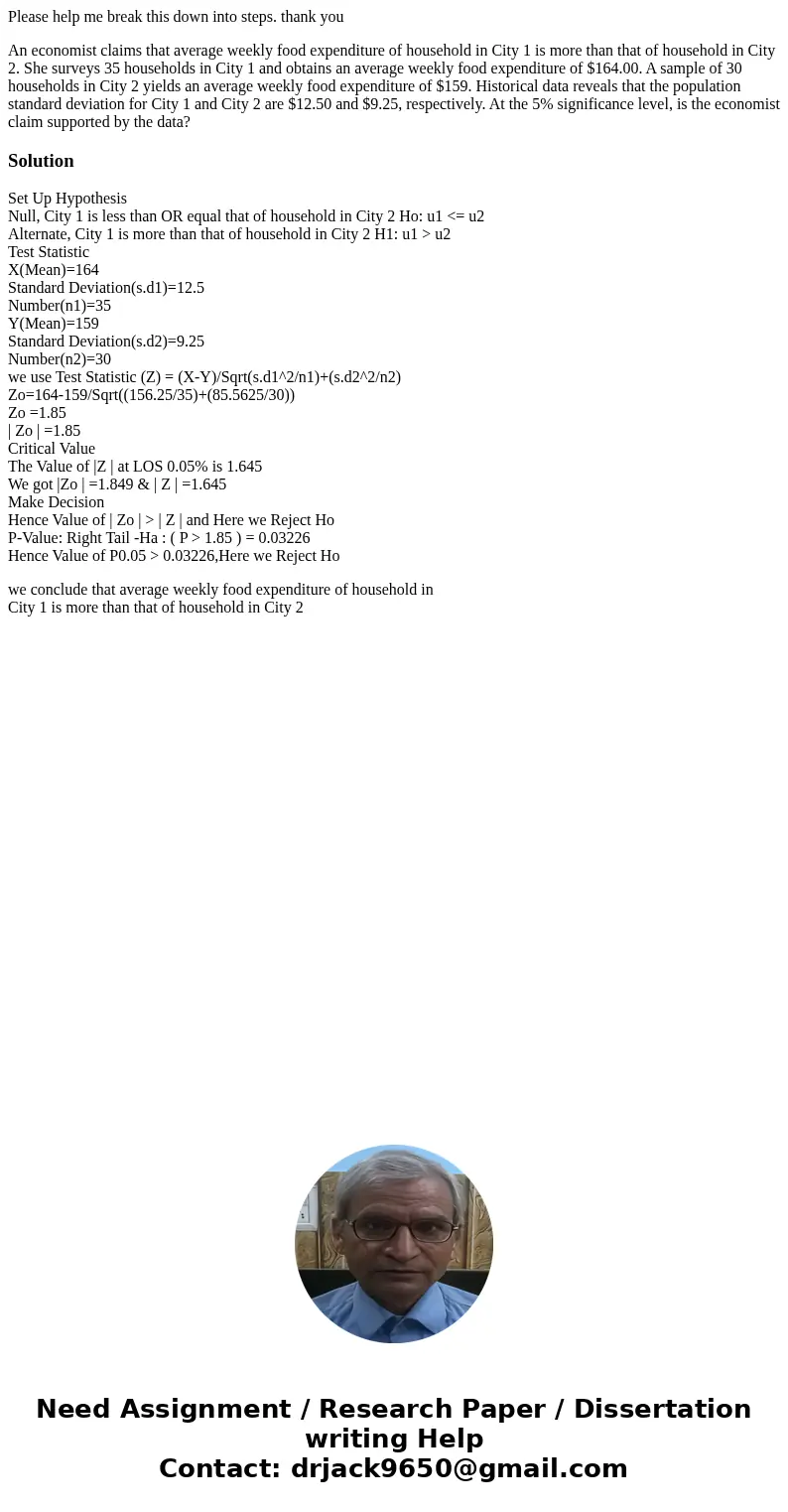Please help me break this down into steps thank you An econo
Please help me break this down into steps. thank you
An economist claims that average weekly food expenditure of household in City 1 is more than that of household in City 2. She surveys 35 households in City 1 and obtains an average weekly food expenditure of $164.00. A sample of 30 households in City 2 yields an average weekly food expenditure of $159. Historical data reveals that the population standard deviation for City 1 and City 2 are $12.50 and $9.25, respectively. At the 5% significance level, is the economist claim supported by the data?
Solution
Set Up Hypothesis
Null, City 1 is less than OR equal that of household in City 2 Ho: u1 <= u2
Alternate, City 1 is more than that of household in City 2 H1: u1 > u2
Test Statistic
X(Mean)=164
Standard Deviation(s.d1)=12.5
Number(n1)=35
Y(Mean)=159
Standard Deviation(s.d2)=9.25
Number(n2)=30
we use Test Statistic (Z) = (X-Y)/Sqrt(s.d1^2/n1)+(s.d2^2/n2)
Zo=164-159/Sqrt((156.25/35)+(85.5625/30))
Zo =1.85
| Zo | =1.85
Critical Value
The Value of |Z | at LOS 0.05% is 1.645
We got |Zo | =1.849 & | Z | =1.645
Make Decision
Hence Value of | Zo | > | Z | and Here we Reject Ho
P-Value: Right Tail -Ha : ( P > 1.85 ) = 0.03226
Hence Value of P0.05 > 0.03226,Here we Reject Ho
we conclude that average weekly food expenditure of household in
City 1 is more than that of household in City 2

 Homework Sourse
Homework Sourse